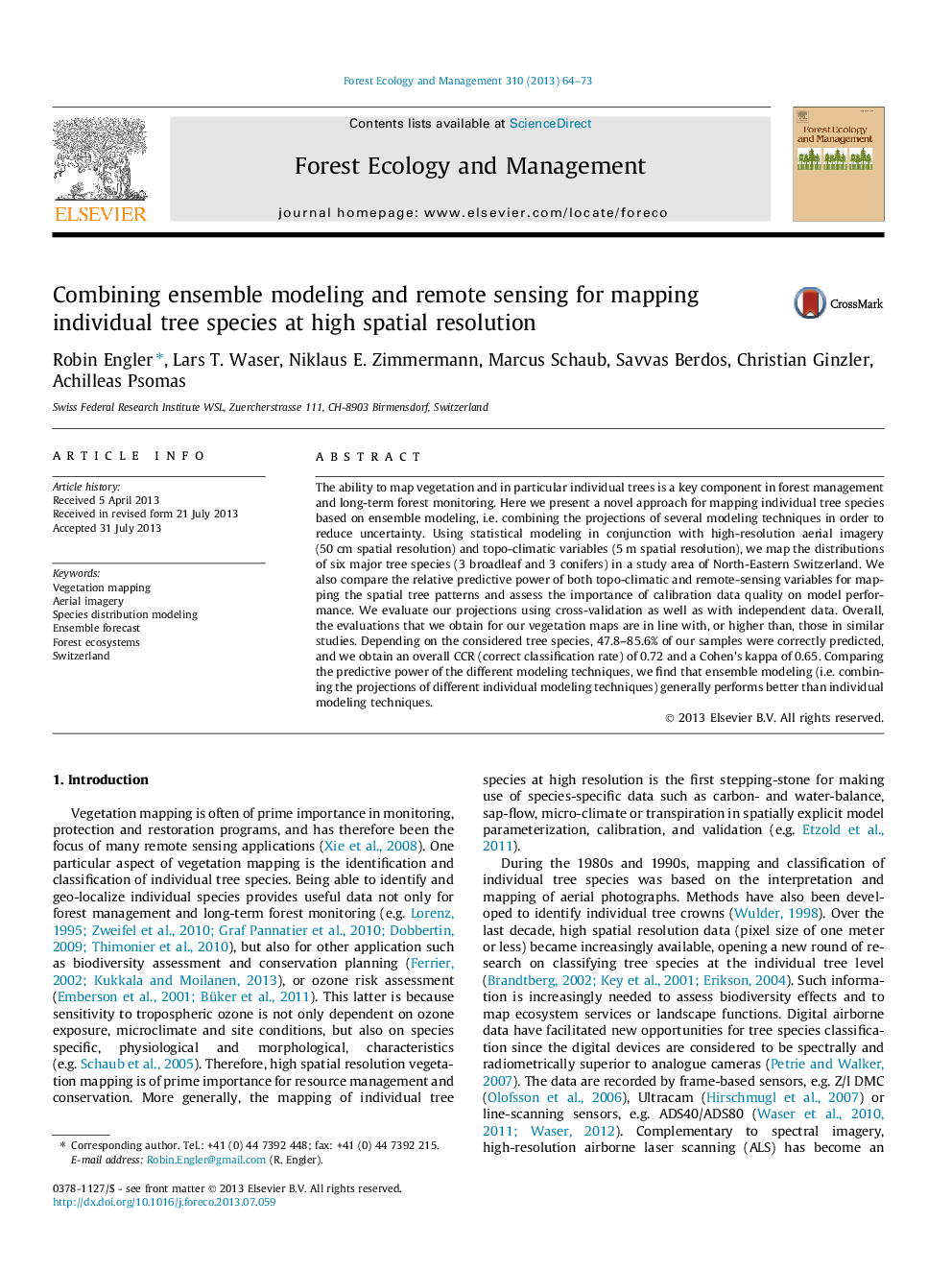| Article ID | Journal | Published Year | Pages | File Type |
|---|---|---|---|---|
| 6543649 | Forest Ecology and Management | 2013 | 10 Pages |
Abstract
The ability to map vegetation and in particular individual trees is a key component in forest management and long-term forest monitoring. Here we present a novel approach for mapping individual tree species based on ensemble modeling, i.e. combining the projections of several modeling techniques in order to reduce uncertainty. Using statistical modeling in conjunction with high-resolution aerial imagery (50Â cm spatial resolution) and topo-climatic variables (5Â m spatial resolution), we map the distributions of six major tree species (3 broadleaf and 3 conifers) in a study area of North-Eastern Switzerland. We also compare the relative predictive power of both topo-climatic and remote-sensing variables for mapping the spatial tree patterns and assess the importance of calibration data quality on model performance. We evaluate our projections using cross-validation as well as with independent data. Overall, the evaluations that we obtain for our vegetation maps are in line with, or higher than, those in similar studies. Depending on the considered tree species, 47.8-85.6% of our samples were correctly predicted, and we obtain an overall CCR (correct classification rate) of 0.72 and a Cohen's kappa of 0.65. Comparing the predictive power of the different modeling techniques, we find that ensemble modeling (i.e. combining the projections of different individual modeling techniques) generally performs better than individual modeling techniques.
Keywords
Related Topics
Life Sciences
Agricultural and Biological Sciences
Ecology, Evolution, Behavior and Systematics
Authors
Robin Engler, Lars T. Waser, Niklaus E. Zimmermann, Marcus Schaub, Savvas Berdos, Christian Ginzler, Achilleas Psomas,
